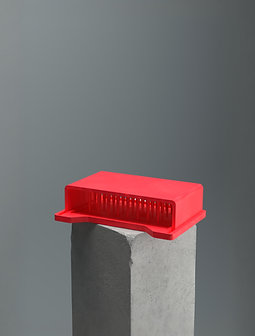1 day ago2 min read
3 days ago4 min read
5 days ago5 min read


Are your wound healing assay results telling the whole story? If you're seeing unexpected migration patterns—or none at all—the culprit might not be your test compound, but a lack of proper controls. Scratch assays are a cornerstone of cell migration research, but without the right benchmarks, your data could be misleading.
Did your wound close with surprising speed? It could be your compound, or it could be the natural motility of your cells. Did it fail to close? This might indicate toxicity, or it could be a simple issue of poor culture conditions. This is where a well-designed set of positive and negative controls makes all the difference. They are the key to interpreting your results with confidence, troubleshooting with precision, and producing robust, publishable findings. This guide will break down the essential controls and how to seamlessly integrate them into your wound healing assay workflow.
In an in-vitro wound healing assay, controls serve as your experimental bookends, defining the expected range of cell migration.
Positive Controls: These are treatments known to stimulate cell migration, leading to accelerated wound closure. They establish the upper limit of migration in your system.
Negative Controls: These are treatments or conditions that inhibit migration, resulting in slower, or even absent, wound closure. They set your baseline for minimal migration.
By using these "migration benchmarks," you can more accurately assess the true effect of your experimental variables.
Here are some of the most effective positive controls to consider:
Serum (FBS): Fetal bovine serum is rich in growth factors that promote both cell migration and proliferation.
How to Use: Add 5–10% FBS to your post-scratch media.
Note: Because it encourages proliferation, it may not be ideal if you need to isolate migration-specific effects.
EGF (Epidermal Growth Factor): A potent motogen, EGF activates receptor tyrosine kinases to boost cell motility.
Typical Concentration: 10–50 ng/mL
Best for: Epithelial cells, keratinocytes, and various cancer cell lines.
bFGF (Basic Fibroblast Growth Factor): This growth factor is excellent for promoting migration in fibroblasts, endothelial cells, and stem cells.
Typical Concentration: 5–25 ng/mL
Cell-Type Specific Chemotactic Agents: For more targeted experiments, use agents known to attract your specific cell type.
Examples:
VEGF for endothelial cells
PDGF for fibroblasts
SDF-1α for mesenchymal stem cells
Pro-Tip: Always include a positive control that aligns with the biological question you're investigating, especially when comparing different donors, treatments, or cell types.
A strong negative control is just as important as a positive one. Here are some of the best options:
Vehicle Control (No Active Treatment): This is a must-have to ensure that the solvent (e.g., DMSO, PBS) used to deliver your test compound does not influence cell migration on its own.
How to Use: Add the same concentration of the vehicle as in your test group, but without the active agent.
Migration Inhibitors: These compounds directly interfere with the cellular machinery of migration.
Examples:
Cytochalasin D: Disrupts the actin cytoskeleton.
Nocodazole: A microtubule destabilizer.
ROCK inhibitors (e.g., Y-27632): Ideal if you are studying contractility-driven migration.
Important: Use these at low, non-toxic concentrations. Always confirm cell viability with a Live/Dead stain.
Serum-Free Media: Starving cells of serum can significantly reduce their motility.
How to Use: Use 0–0.2% FBS in your post-scratch media.
Caution: Avoid using highly toxic conditions, such as high concentrations of ethanol, as negative controls. If your cells are dying, you are observing cell loss, not a true inhibition of migration.
Seed your cells and allow them to form a confluent monolayer.
(Optional) Pre-treat with Mitomycin C if you need to isolate migration from proliferation. Read this article!
Create the scratch using a consistent method like CLYTE's CellCut.
In parallel with your test conditions, apply your control treatments:
Vehicle control
Positive control (e.g., EGF or FBS)
Negative control (e.g., cytochalasin D or serum-free media)
Image the scratch at time 0 and at your chosen endpoint (e.g., 6-24 hours).
Analyze the percentage of wound area closure using consistent software settings across all groups.
Replicates are Key: Use at least triplicates for each control to ensure your results are statistically significant.
Mark Your Plate: Mark the underside of your plate to ensure you image the exact same field at each time point.
Confirm Cell Health: Always use a viability stain to distinguish between cytotoxicity and genuine migration inhibition.

Controls are not just a formality; they are the foundation of a reliable wound healing assay. Without them, your data is ambiguous. With them, you can draw sharp, confident conclusions about how your treatments impact cell behavior. The next time you set up a scratch assay, remember these simple steps to ensure your results are as meaningful as possible.
1. Can I use the same positive control for all cell types?
Not always. Different cells respond to different motogens. EGF works well for epithelial cells, but fibroblasts may respond better to PDGF or FGF.
2. Is FBS a valid positive control?
Yes—but it also stimulates proliferation. If you want to isolate migration, combine FBS with Mitomycin C or use a defined growth factor.
3. Do I need both vehicle and untreated controls?
Yes, especially if your test agent is dissolved in a solvent like DMSO. The vehicle control helps distinguish solvent effects.
4. Can I skip negative controls if my wound doesn’t close?
No—negative controls help you understand why your wound didn’t close (e.g., toxicity, serum starvation, actin disruption).
5. Can I use Mitomycin C as a standalone negative control?
Not exactly. MMC blocks proliferation, not migration. It’s best used to isolate migration—not to completely stop closure.
6. Can I use imaging-based viability to support my controls?
Absolutely. Combining scratch assays with Live/Dead staining or Crystal Violet improves interpretation of results.

